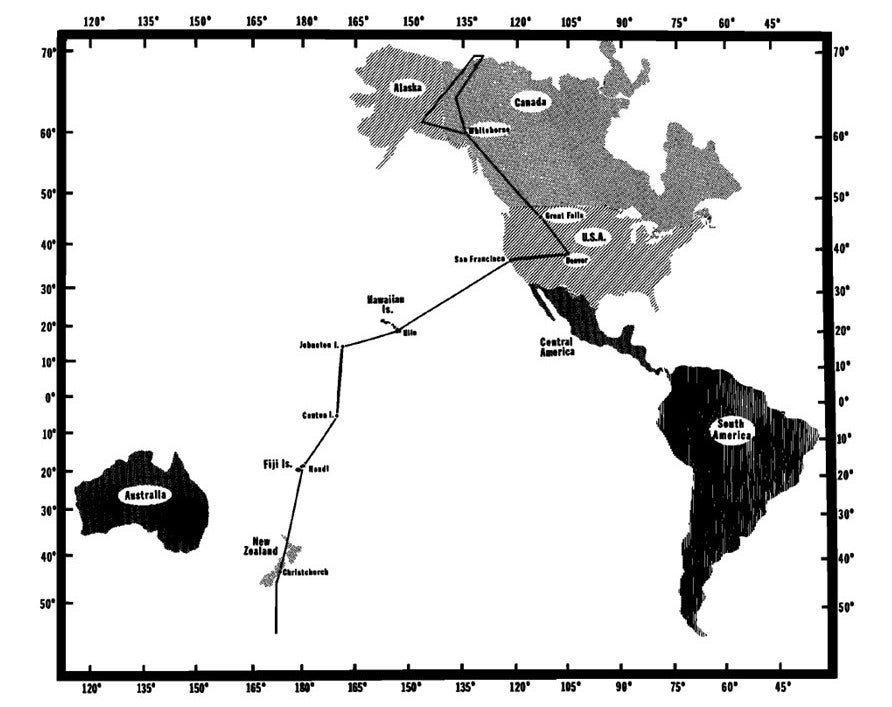GAMETAG-78
Global Atmospheric Measurements Experiment on Tropospheric Aerosols and Gases - 1978
The GAMETAG Program was designed to provide a limited but meaningful test of present models for short-lived photochemical species and also to provide survey data on these and numerous other long-lived species over an extensive latitude range. Representative of those species involved in fast chemical coupling are the various nitrogen and oxygen species. For species having lifetimes of a few days or longer, the impact of atmospheric transport was considered and simultaneous measurements are critical for model testing and development. In addition to simultaneous measurements as a fundamental part of the sampling strategy, a second aspect of the field sampling strategy was that of making measurements both in and above the atmospheric boundary layer.
Participation in GAMTAG was the National Science Foundation (NSF)-supported National Center for Atmospheric Research (NCAR), seven universities (Colorado College, Drexel University, Georgia Institute of Technology, Oregon Graduate Center, York University, University of Colorado, Florida State University), and one private research company (Panametrics).
Scientific Objectives
Before and during GAMETAG, numerous scientific questions and issues were raised and investigated which included: (1) Importance of photochemical and transport processes in controlling the global distribution of ozone; (2) Impact of pollution verses natural sources in dictating the tropospheric distribution of carbon monoxide; (3) Global distribution of methyl chloroform and its systematic relation to global hydroxide distribution; (4) Evidence for gas to aerosol conversion in the clean troposphere; (5) Importance of natural verses pollution sources in controlling global sulphur dioxide levels; (6) Role of the oceans in controlling boundary layer trace gas concentrations; and (7) Global distribution of nitrogen oxide species.
Project Operations
The sampling platform used for GAMETAG-78 was the NCAR operated L-188C turboprop Electra aircraft. It had a nominal operating ceiling of 6.4 km and a range, at that altitude of ~3200 km. But for GAMETAG-78 sampling scenerios, involving both boundary layer and free tropospheric flight legs (1 km and 6 km respectively), the effective range of the Electra was reduced to ~2200 km and flight durations of ~6.5 hours. The payload instrumentation/measurements consisted of over 50 simultaneous sampling of standard meteorological variables, navigation, aircraft performance, aerosol properties, radiation, as well as a full suite of chemical and trace gases. Time resolution for the GAMETAG-78 instrument array varied from a relatively short response time of 1-s to a very low-resolution sampling time of ~60 min. However, most of the real-time measurements had a time resolution of 15-min or shorter, thus providing a reasonable basis for the testing of photochemical models.
GAMETAG-78 consisted of eighteen (18) survey flights of Western North America and the Pacific Ocean between 27 April 1978 to 1 June 1978 with flights and stops shown in the project map (below). Stops and flight legs included San Francisco CA, Hilo HI, Johnston Island, Canton Island, Fiji Islands, Christchurch NZ, Great Fall MT, and Whitehorse CN.
